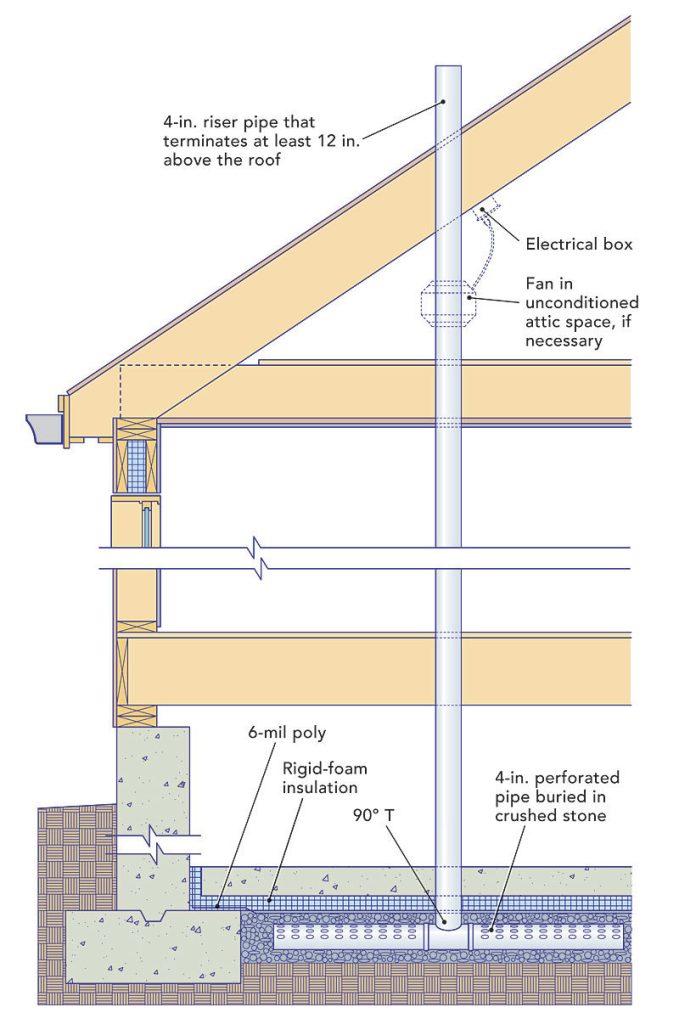New buildings of all types can be designed and built to be radon resistant. Radon Resistant New Construction (RRNC) requires the installation of foundation features that will help prevent radon entry and a piping system which can collect the gases emitted by the soil and vent them into the air above the roofline. Builders are only allowed to install passive radon reduction piping without using an NRSB or NRPP certified radon mitigator, however EPA and VDH both encourage consulting with or hiring a certified professional to ensure that the piping is installed correctly. When a passive RRNC system is properly installed, it is thought to reduce the indoor radon level by an average of 50%. Soon after construction is finished and the owner moves in, the home should be tested for radon to see how well the RRNC system is performing. If the radon level is 4.0 pCi/L or higher, a certified radon mitigator should be hired to convert the system from passive to active by installing a fan. Radon mitigation fans cannot be located in livable space (ex. basement) or in spaces that have livable space located directly above (ex. crawl space). The best fan location would be in an unoccupied attic. An RRNC system usually adds less than $1000 to the cost of the home and much of the piping can either be hidden in an interior wall or located in the livable interior space(s) of the home. Installing a full mitigation system after construction is finished usually costs more and most of the piping and the fan will usually be attached to an exterior wall of the home and therefore highly visible.
The Virginia Code currently allows counties or cities that have been designated by the USEPA as high risk (e.g., Zone 1) for indoor radon the option to adopt Appendix F of the International Residential Code (IRC) into their local building code. Doing so would require the use of RRNC techniques in most new residential single-family dwellings. Homes built over ventilated crawl spaces and multi-family buildings are currently exempt. Radon risk designations are derived from the EPA radon risk map for Virginia that was released in 1994. To date, the following Virginia jurisdictions are known to require RRNC:
Counties: Amelia, Buckingham, Louisa, Montgomery, Nottoway, Orange, Rockbridge, Shenandoah, Tazewell, Wythe
Independent Cities: Blacksburg, Buena Vista, Christiansburg, Lexington, Radford, Roanoke, Salem
Some home builders offer RRNC as an option and some install it in every home they build – regardless of whether the local jurisdiction’s building code requires it or not. If you would like your new home to be built with RRNC but it is not yet required in your area, check with your builder to discuss any options that might be available. The diagram below shows the components of a properly installed passive RRNC system. For more specific construction details, please consult the current ANSI/AARST guidance standards for the control of soil gas in the new construction of 1) single family homes & townhomes or 2) multi-family/school/commercial buildings.

